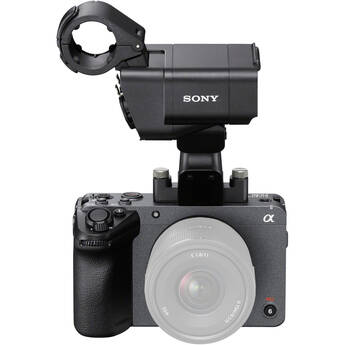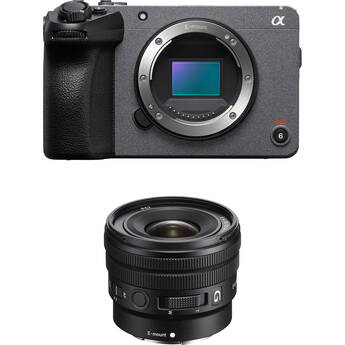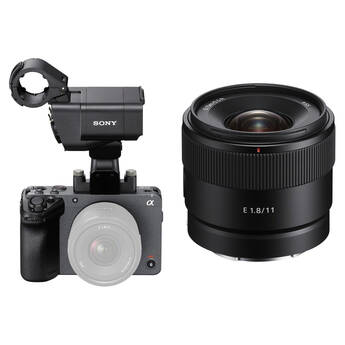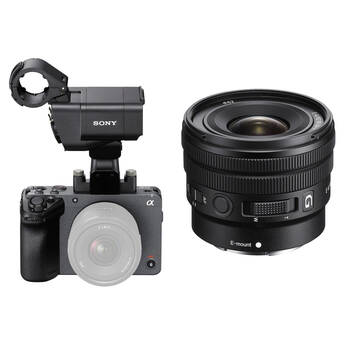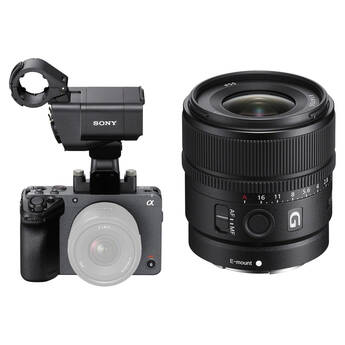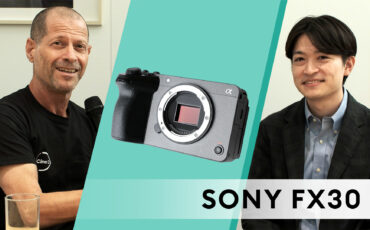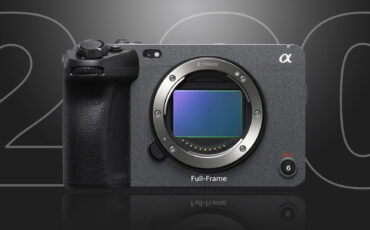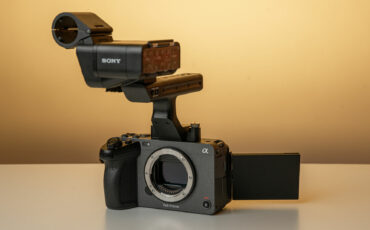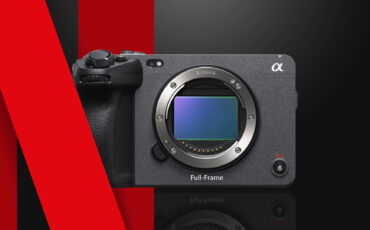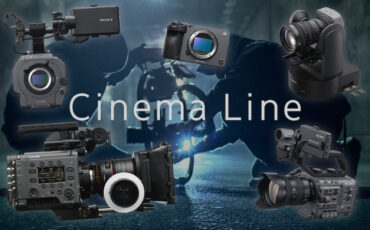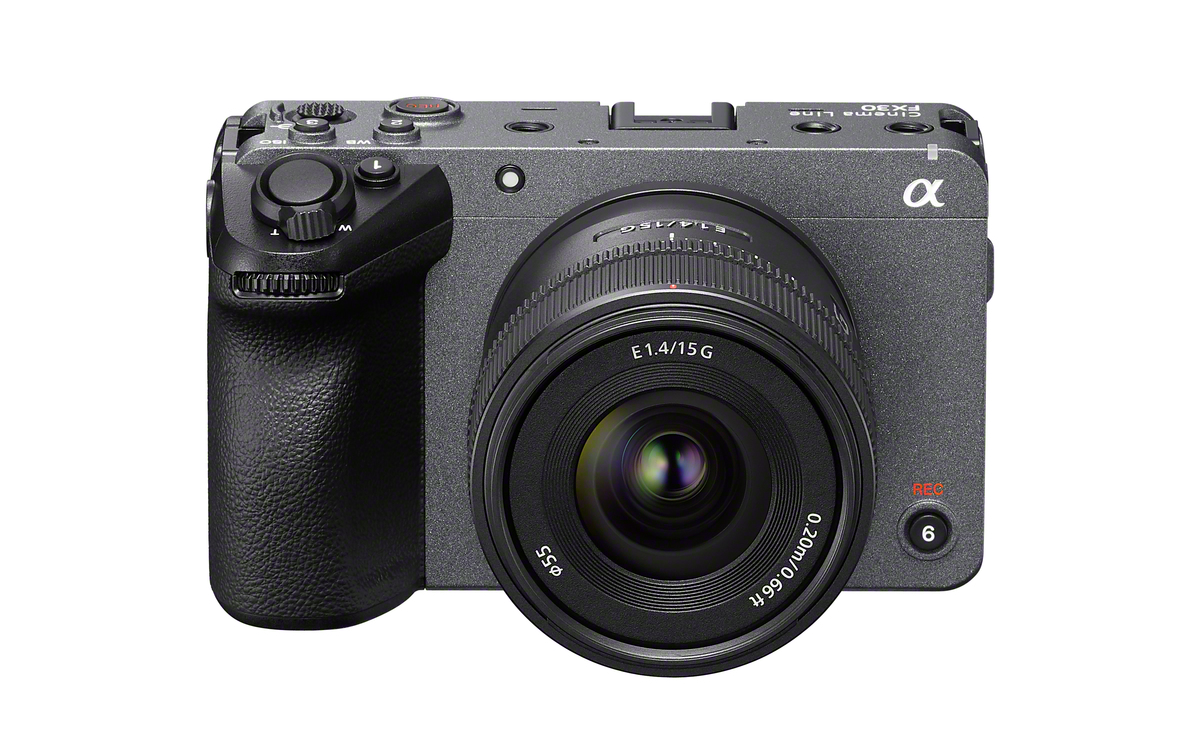
Sony has just unveiled their latest camera, which is part of the prestigious Cinema Line. This new Sony FX30 camera features a new APS-C sensor rather than a full-frame one. It offers 26MP in still mode (APS-C 3:2, 6192×4128) and 20.1MP in video mode (Super 35mm 16:9, 3840×2160). Interested in finding out more? Meet Konsuke Imagawa-San, Sony’s 26-year-old product planner, who kindly sat down with us to chat about this new camera.
If you know the Sony FX3 mirrorless camera already (news article | review), this new Sony FX30 looks very familiar. In fact, both share the exact same body apart from the sensor used. And being part of the Cinema Line, the new FX30 is a video camera first, still photography second, and aimed at young content creators.
The Sony FX30 is capable of recording up to 4K60p (3840×2160) resolution, in All-I / Long GOP h.264/265 10bit 4:2:2 codec. The 4K resolution is being oversampled from the entire 6K area of the newly developed backside illuminated EXMOR R CMOS sensor for a sharper 4K image. When cropping in 1.6x, 4K120p becomes an option as well, and in Full HD you can shoot up to 240p.
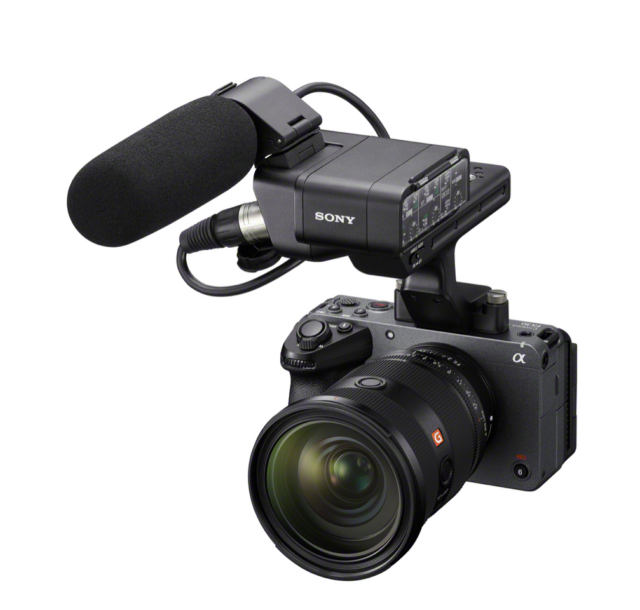
Sony FX30 mirrorless camera
Since the Sony FX30 and the already available FX3 look so much alike when you examine them from the outside, it might be difficult to pick one over the other. Well, it depends on the sensor used since a smaller sensor naturally leads to more compact lenses, better battery performance, more manageable file sizes, and much more.
If you want to get the most out of the form factor of these cameras, the FX3 is probably the way to go, but if you don’t need a full-frame sensor (or if you aim to avoid the hassle of larger lenses, etc.), the Sony FX30 may be a perfect choice.
The Sony FX30 has a number of software features aimed at filmmakers, such as the so-called User LUTs, which can be applied to both the LCD monitor and HDMI output to get an accurate preview of the final image. Three presets and up to 16 user-created LUTs can be imported.
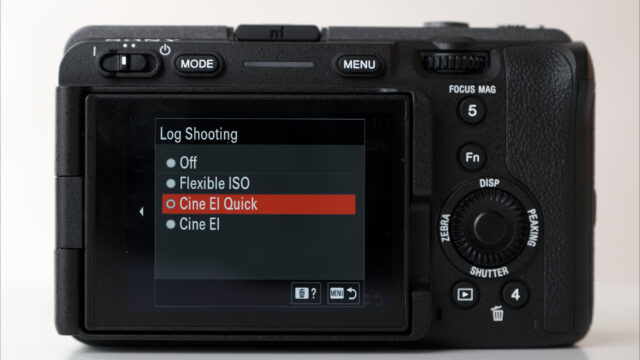
Log Shooting modes
The FX30 has three different shooting modes to help you with exposure when working in log mode. Again, this feature is aimed at filmmakers, not so much at photographers.
- Flexible ISO: This mode offers the greatest flexibility for exposure settings
- Cine EI: This mode is inherited from higher-up cameras in the Cinema Line such as the FX6 or FX9, for example. Read more about it here. It allows working with a fixed ISO base and maximum latitude.
- Cine EI Quick: In this mode, the camera automatically sets the base ISO according to the selected Exposure Index (EI). This mode basically eliminates a few more advanced steps when setting up a Cine EI workflow and might be useful for those who are experimenting with working with Cine EI for the first time.
The Cine EI modes are particularly impressive here, providing a solid quality reference point for downstream editing. That way, this small cinema camera can be used very well as a B-cam on larger productions and still provide the necessary quality consistency for post-production. Sony specifies a dynamic range of 14+ stops when filming in S-Log 3, and the available ISO settings range from 100 to 32,000. (CineD’s camera lab test is currently in the making).
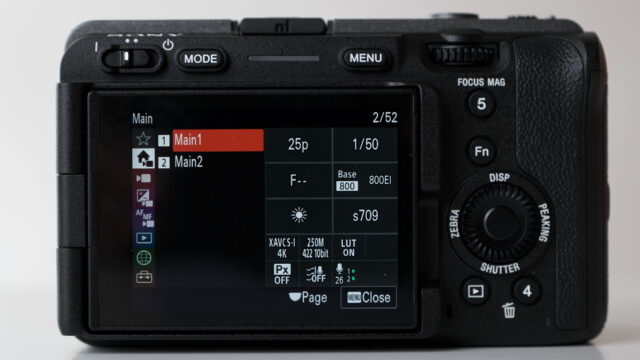
Features
Of course, the new FX30 offers Sony’s famous Hybrid AF, which uses almost 90% of the sensor area and 496 individual focus points. It also features real-time eye AF (people, animals, and even birds) and real-time tracking.
Focus Assist (smooth switching between AF and manual focus) is also available, as is a so-called Focus Map that visualizes the depth of field. Focus breathing compensation, which eliminates the dreaded focus breathing, e.g. when filming with photo lenses, is also very useful. Of course, for this to work, a slight crop must be applied.
Also on board is Sony’s In-Body Image Stabilization (IBIS), which uses a slight crop in “Active Mode” to achieve the best performance, though there is no crop in Standard Mode.
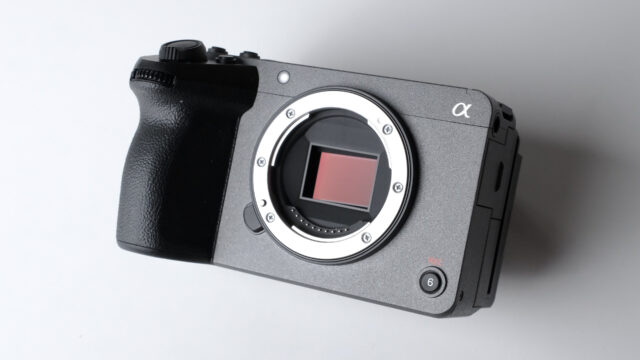
Sony FX30 – Specifications
The body weighs just 646g (with battery and SD card inserted – 562g without), and just like the FX3, the Sony FX30 features the same mounting holes in the body itself, so no camera cage is required for a basic configuration.
The FX30 also features the “new” Sony menu system, which is much clearer and easier to understand and navigate. Another new feature is how the image is displayed when filming, as most of the frame is not obscured by menu items. These items are located around the image and not on the frame itself.
Here’s a list of specifications for the new Sony FX30:
- Image sensor: 6K, APS-C/ Super 35mm (back-illuminated, full pixel readout without pixel binning)
- Processing engine: BIONZ XR
- Resolution: QFHD (3840 × 2160)
- HFR (4K / FHD): 4K 120p / FHD 240p (Approximately 38% image crop)
- Recording format: XAVC S / XAVC S-I / XAVC HS
- Bit-Depth / Codec: 10/8bit 4:2:2, Long GOP, All-I / H.264, H.265
- ISO range: 100 – 32,000
- Dual Base ISO: 800/2500 (In S-Log3)
- Latitude: 14 Stops (Sony’s figure)
- Cinema Look / S-Log: S-Cinetone, s709 / S-Log 3, HLG
- LUT (Preset / Custom): 709 (800%) / Yes (User LUT)
- Log Shooting Setting: Flexible ISO / Cine EI / Cine EI Quick
- Autofocus: Fast Hybrid AF / Eye-AF (human, animal, bird) / Tracking (Including in 4K/120p)
- AF Assist / Focus Map: Yes / Yes
- Breathing Compensation: Yes
- IBIS: 5-Axis (Standard / Active)
- RAW: 16bit RAW output via HDMI Type-A
- Handle: XLR handle
- Audio: XLR/TRS x 2, 3.5mm x 2 / LPCM 4ch 24bit
- TC: TC IN with a dedicated adaptor
- Active cooling: Internal fan
- Media: CFexpress Type-A / SD x2
- Battery: NP-FZ100 (16.4Wh)
- Size & Weight: 129.7 x 77.8 x 84.5 mm / 562 g
As a nice touch, since this is a film camera, Sony points out that the FX30’s stills are color-matched to the video specs, so they can be used for location scouting, for example.
FX30, FX3 – Main differences
Next to the sensor size and price difference between the cameras, it is important to note that where the FX30 falls short – it’s the “stills mode” when compared to the FX3. Some features and functions are not provided with the new camera. There is no mechanical shutter, continuous still shooting, or uncompressed RAW. Also missing is the image sensor “anti-dust function” and AF illuminator. If you are into photography, you will find that the camera is not compatible with an external flash and NFC communication is not available.
So very much depending on your creative needs, the exclusion of these functions may or may not be important to you when deciding if this is the right tool for you.
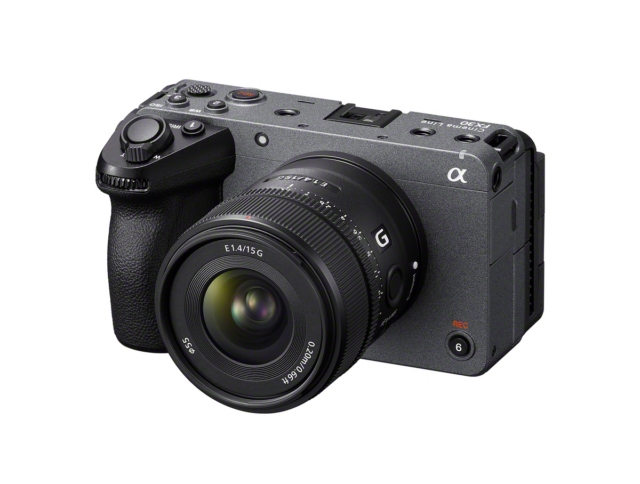
Pricing and availability
The new Sony FX30 mirrorless Cinema camera is available now, and it sells for $1800 body only and $2.199 with the XLR handle. For reference, the (much bigger) Blackmagic Design BMPCC 6K G2 (article here), which also uses an APS-C sensor, sells for $1,995, but it lacks features like IBIS, Eye-AF, and others.
Link: Sony website
What do you think of this Sony FX30 APS-C camera? Would you use it as a B-Cam for other cameras of the Cinema Line? Share your thoughts in the comments below!

